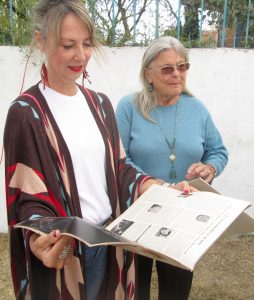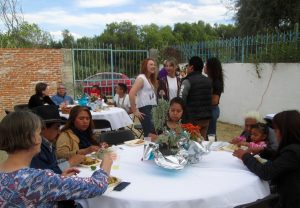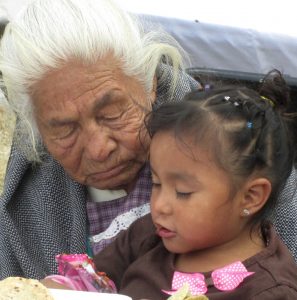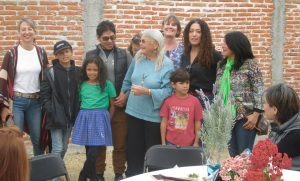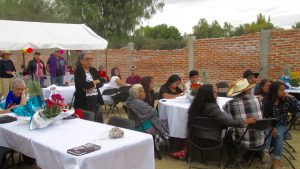You may remember the bestselling memoir written by Vietnam veteran-turned-antiwar-activist Ron Kovic and published in 1976, titled Born on the Fourth of July, which was later adapted into an Academy Award-winning film by the same name starring Tom Cruise as Kovic.
This book had a profound, visceral effect on me at the time, as I was then in the writing program at Columbia University in New York embarking on my own first memoir, later titled Somewhere Child. I like to think that Kovic helped to teach me by example how to write a memoir that touches the soul.
In his book Kovic shares, in honest, straight-forward, un-self-pitying prose, his early, flag-waving patriotism — he was, in fact, born on the 4th of July in 1946 — his growing up in a large Catholic family in Massapequa, New York, joining the Marine Corps right out of high school, and being sent to Vietnam, where he was severely wounded and paralyzed from the chest down.
His story could have ended there, of course, and Kovic might have been forever lumped among history’s countless forgotten war heroes. But his powerful memoir goes on to recount his return to the roiling anti-war movement in the United States, his poor treatment by the Veterans Administration, and his gradual awareness of the wrongness of that war.
Ultimately, Kovic rose up to become a hero of another kind, one of the country’s most outspoken anti-Vietnam War advocates, spreading his message across the country from his wheelchair – and then in the pages of his book.
Oddly, I’ve been thinking a lot about Kovic’s book this week, ever since I attended the 80th birthday party of another hero of mine, Elsmarie (Elsa) Norby, at her home in San Miguel Viejo, a village on the outskirts of San Miguel de Allende, Mexico.
Elsa was born in Oak Park, Illinois, to Swedish immigrant parents on the first of the year, January 1, 1940, during the second world war; and although, as far as I know, she’s never served in the military, she has certainly emerged victorious from various life battles. Now, at eighty, she plans to finally retire and write a book about her experiences.
Elsa’s was one of the first WOW interviews I did with remarkable women of San Miguel de Allende after I moved here in late-2015. I titled that interview, posted April 4, 2016, “Out of the Ashes” because of a story she told me:
Ten years before, after “a heartbreaking breakup,” when all she wanted to do was “drop out and bury my ashes under a cactus,” Elsa decided to buy a small piece of land outside of San Miguel and build a little house on it. At first she found, in this poor, indigenous village, where running water and electricity were intermittent and the people still collected wood for cooking, that the adults saw her as an outsider, an interloper. She felt unwelcome.
Her story could have ended there, of course: single, older woman living alone in the countryside, in a little house behind a tall, sturdy gate, keeping to herself. But the local children knocked on the door of her heart, and she opened it.
As she continued in that 2016 WOW interview:
“The children came by my home with great curiosity. To make friends, I gave them pencils, then paper and books. I was very impressed with their creativity, kindness and joyful presence. I realized that with a space and some materials, these children could put themselves on a path of learning. Soon most of the children in the community, of all ages, were coming to my house for these opportunities.”
The now-famous nonprofit program Elsa created in 2007 as a result of this encounter is Ojalá Niños – “ojalá” meaning “hope,” and “niños” meaning children – offering free, year-round classes every weekday afternoon to children of all ages, covering art, music, Spanish literacy, environmental issues, health, sports, social justice, and social service. (Please see their website www.ojala-ninos.org, as well as my WOW post “Hope for the Niños” published March 19, 2016, for more.)
Fast forward to this week, thirteen years after Ojalá Niños’ birth, to the January 1st celebration of Elsa’s 80th birthday, her life, and her accomplishments. Members of the community, old and young, came to honor her and thank her for all that she has done for them. There was music, food, laughter, hugs, and many heartfelt speeches – in both Spanish and English.
When I asked the Birthday Girl, who had never looked healthier or happier to me, this silly question, “How does it feel to be eighty?” she told me sincerely she’s never felt better. Last year she was misdiagnosed with kidney disease; now she’s all clear. She plans to pass the baton of Ojalá Niños on to “young blood” soon, so that the organization will not only stay alive but will grow and thrive. She’ll move to a small apartment in town, and write her memoirs.
Who knows, I thought, maybe someone will make a movie of her book too.
Here are some of my photos from Elsa’s 80th birthday fiesta to make you feel you were there:
